 Until late March of this year, eating out was a way of life for many people. In fact, the average American was eating out 5.9 times a week; that included everything from a quick lunch from the nearest drive-thru to a more leisurely meal at an elegant restaurant. But, at least for the time being, the days of frequenting restaurants for most meals is in the rearview mirror. As most Americans are forced to stay home during the pandemic, they’re changing routines — and that includes cooking at home more often.
Until late March of this year, eating out was a way of life for many people. In fact, the average American was eating out 5.9 times a week; that included everything from a quick lunch from the nearest drive-thru to a more leisurely meal at an elegant restaurant. But, at least for the time being, the days of frequenting restaurants for most meals is in the rearview mirror. As most Americans are forced to stay home during the pandemic, they’re changing routines — and that includes cooking at home more often.
While this time offers a great opportunity for people to sharpen their cooking skills, it also is causing an uptick in a deadly trend: People are accidentally setting their kitchens on fire at a rather alarming pace. Fire departments in Virginia, California, Florida, New York, Maryland and Michigan are among those that have reported more house fires. And, more specifically, kitchen fires.
The problem is significant enough that it prompted the National Fire Protection Association to ask people to exercise more caution in the kitchen.
“As many households are now dealing with unusual routines and out-of-the-ordinary circumstances, such as kids home from school and parents working from home, there’s greater potential for distracted cooking,” says Lorraine Carli, vice president of outreach and advocacy at NFPA. Cooking is already recognized as the leading cause of home fires, accounting for nearly half of all home fires. Among cooking fires, unattended or distracted cooking is the biggest threat.
At a time when social distancing is recommended, if not mandated, a single kitchen fire could prove disastrous for tenants and building managers alike. As one fire marshal pointed out in an article on Vice.com, “This is not the time to have a fire in your home. Where are you going to go?”
Providing tenants with some basic cooking safety tips and reminding them of specific dangers in the kitchen could go a long way toward keeping everyone in your building safe during the coronavirus lockdown.
Cooking Safety Tips for Beginners
Some tenants may know very little about cooking, particularly if it’s their first time to live on their own. Start by giving basic tips for keeping the kitchen safe, which include:
- Don’t store anything in the oven. It may seem like a great out-of-the-way place to store a loaf of bread or extra hot pads and kitchen towels, but if someone forgets (or doesn’t know) they’re in there, and turns the oven on, it could cause a fire.
- Keep pets and kids out of the kitchen when cooking. Not only can they be a huge distraction, but they can also cause accidents that can lead to burns and fires. The NFPA recommends keeping kids and pets at least three feet away from an active stove.
- Make sure flammable items are far away from the stovetop. Having that roll of paper towels next to the stove sure is handy for spills — and it’s also a quick way to ignite a kitchen. Other things to watch out for include oven mitts, curtains, wooden utensils and hand towels. If it can ignite, get it away from the stove.
Teaching Tenants About Cooking Safety
In addition to ensuring their kitchens are set up for safe cooking, tenants need to understand the basic features of their cooking appliances. For example, if you have gas stoves in your units, don’t assume that everyone is familiar with how to cook with gas or how to set the proper flame. Although the NFPA reports that electric stoves are 2.5 times more likely than gas stoves to have a fire, gas stoves can be dangerous if a pilot doesn’t light and the gas is left on, even for a second or two.
Make sure that the dials are readable, that there aren’t any leaks or worn parts on gas stoves and that tenants know how to operate their equipment. Then, provide safe cooking suggestions including:
- Never cook while drowsy or under the influence of alcohol.
- Do not leave an active stovetop unattended, not even for “just a minute.” This is one of the main causes of cooking fires, and it can happen in a matter of seconds.
- Clean all grease splatters and drips out of your oven immediately, as these can catch fire the next time the oven is ignited.
- Pay special attention to grease, oils and fats when cooking. The hotter they get, the more dangerous they are, and they’re a leading cause of stovetop fires.
- Don’t wear loose-fitting clothing when cooking, as it can catch on fire. (The same goes for long hair; make sure it’s tied back.) Although this happens in less than 1% of cooking fires, it is particularly dangerous and accounts for 14% of home cooking fire deaths.
How to Handle Cooking Fires
Finally, tenants need to know what they should do if a cooking fire occurs. Of course, every unit should have multiple smoke detectors, and every kitchen should have a fire extinguisher.
It’s also a great idea to educate residents on the best way to react to a stovetop fire. Advise tenants to always cook with the lid of the pan they are using nearby. If there’s a fire in the pan, an effective way to put it out is to cover the pan, which cuts off oxygen to the flame. There are things they shouldn’t do, too, such as pouring water on the flame or trying to move the flaming pot to the sink or outside.
The problem with these solutions is that they depend on an individual being present, alert and calm. They must know how to properly use a fire extinguisher and also must know when the fire is too big for them to use an extinguisher.
A better way to suppress a fire on the stove is to use a product from StoveTop FireStop.When mounted above a stove, the canister will automatically activate when there is direct, sustained contact from a flame with the fuse on the bottom of the canister. As soon as that happens, the canister releases a fine, dry powder over the flames that safely suppresses the fire. As it activates, the canister makes a loud “pop” sound to alert your tenant. Immediately after activation, when it is safe, he or she can shut off the stove’s burner to keep the fire from reigniting. For more product information see StoveTopFireStop.com.
The last thing tenants — and landlords — need to deal with right now is a cooking fire, but unfortunately, they are increasingly common with more people cooking at home. A little education and taking the proper precautions can ensure that your building and all of its residents stay safe.
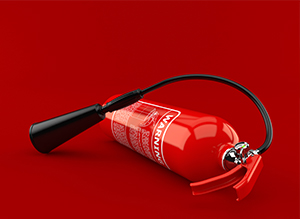 When it comes to protecting the property you own or manage, minimizing the risk of damage from fire is one of the most important things you can do. Every year, fires unexpectedly destroy homes and lives, and many of them are completely preventable.
When it comes to protecting the property you own or manage, minimizing the risk of damage from fire is one of the most important things you can do. Every year, fires unexpectedly destroy homes and lives, and many of them are completely preventable.
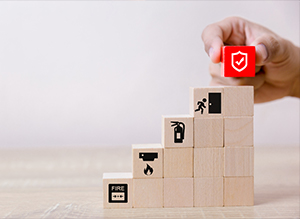 Although any building can be at risk for fire, the
Although any building can be at risk for fire, the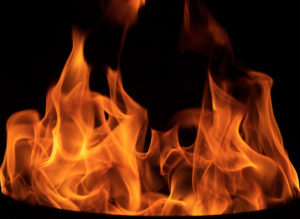 While cooking with grease can enhance the flavor of your food, it also can increase the risk of a kitchen fire. In fact, the National Fire Protection Association (NFPA) notes that
While cooking with grease can enhance the flavor of your food, it also can increase the risk of a kitchen fire. In fact, the National Fire Protection Association (NFPA) notes that 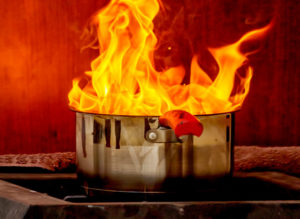 Knowing how to handle fires in the home is important for every homeowner or tenant. But with so many fires still causing damage, injury and death every year, it’s apparent that more education and better tools are needed to save lives and property.
Knowing how to handle fires in the home is important for every homeowner or tenant. But with so many fires still causing damage, injury and death every year, it’s apparent that more education and better tools are needed to save lives and property.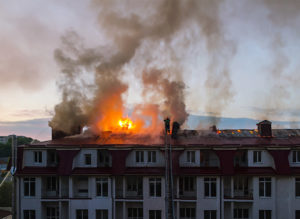 Any building is at risk for fires, though causes vary with the structure and how it’s used. Even among residential fires, the risks can be very different, depending on whether it’s a single-family residence or a multifamily dwelling such as an apartment complex, condominium, townhouse or row house.
Any building is at risk for fires, though causes vary with the structure and how it’s used. Even among residential fires, the risks can be very different, depending on whether it’s a single-family residence or a multifamily dwelling such as an apartment complex, condominium, townhouse or row house.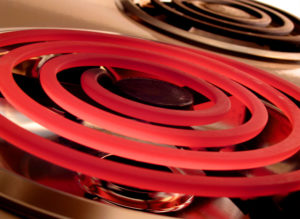 Every day, millions of people cook a meal without giving it a second thought. But much like getting behind the wheel of a car, each time they fire up a burner or turn on the oven, they’re putting themselves at risk — even though it’s something they’ve probably done countless times.
Every day, millions of people cook a meal without giving it a second thought. But much like getting behind the wheel of a car, each time they fire up a burner or turn on the oven, they’re putting themselves at risk — even though it’s something they’ve probably done countless times.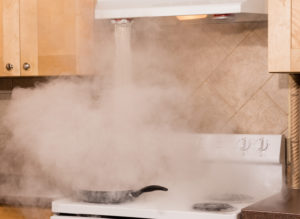 Kitchen fires
Kitchen fires